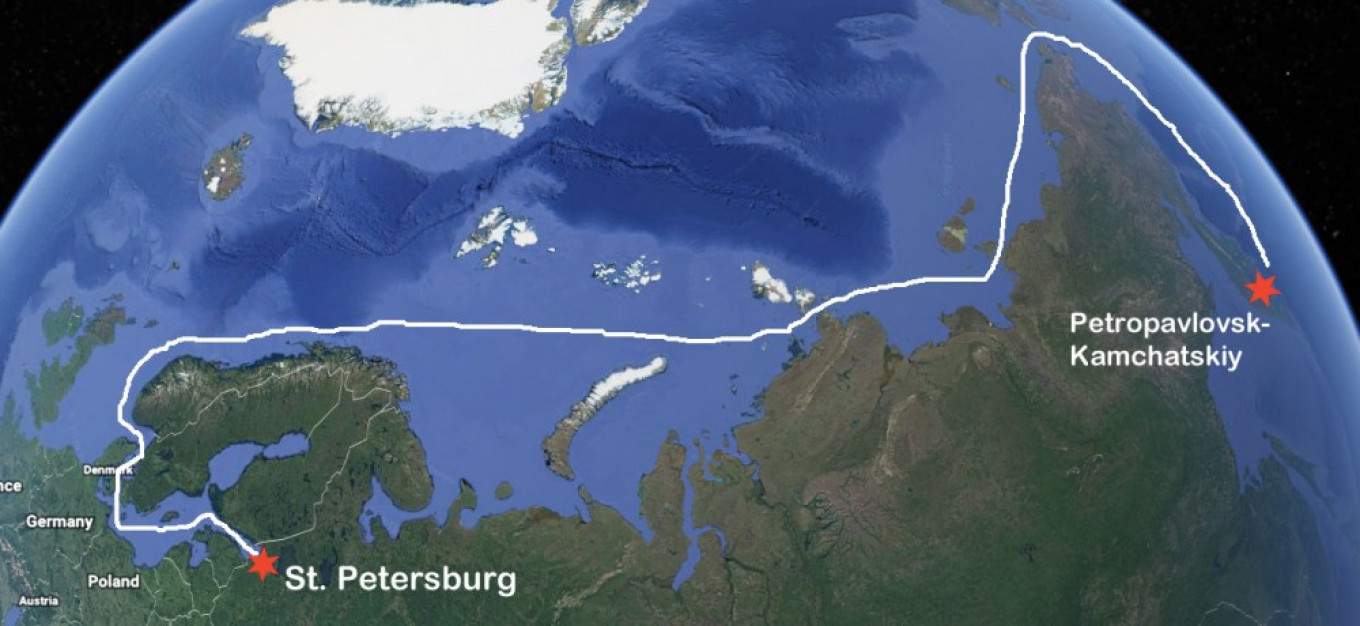Russia’s 30-year-old nuclear-powered Sevmorput container carrier will soon transport 5,000 tons of fish from the country’s Far East to St. Petersburg via the Northern Sea Route.
“This test voyage with the container carrier gives hope that someday such deliveries will become regular,” the Kamchatka region governor Vladimir Kuzmitsky has said in an interview with the region’s official news portal.
The Sevmorput will transport 200 containers filled with frozen fish, fillets, caviar and other seafood, with a total of 5,000 tons of cargo.
The first two stops of the three-week voyage will be along the Northern Sea Route, north of Siberia.
This is the first time that a Russian civilian nuclear-powered ship will sail with cargo outside the coast of Norway. From the North Sea, the Sevmorput will continue sailing through the narrow waters between Sweden and Denmark through the Great Belt and into the Baltic Sea before its final port call at St. Petersburg.
Russia’s state nuclear energy corporation Rosatom confirmed the voyage in a tweet on Monday.
Sevmorput is expected to cross the Barents Sea and sail outside Norway by the second week of September. The ship will then sail back on the same route and embark on a second voyage in late October.

Seafood shipping from Russia’s Pacific region to St. Petersburg via the Arctic is being made in cooperation between authorities in the Kamchatka region, Norebo Group, Rosatom and the Ministry for Development of the Far East and the Arctic.
Norebo is an integrated group of fishing, processing, trading and seafood transporting companies in northwest Russia and the Far East.
Negotiations have already started with an aim to sail the same route as a regular operation next year.
Sevmorput is a one-of-a-kind nuclear-powered lighter and container carrier. Originally commissioned in 1988, the vessel mostly stayed in a Murmansk port. In 2008, the ship was officially laid up and in 2012 plans to scrap it had been drafted.
Operation until 2024
In 2013, however, a decision was made to renovate the ship instead. In autumn 2015, Sevmorput was again test-sailing the Barents Sea. The following year, the ship was back in normal operations, shipping cargo along the north coast of Siberia and transporting supplies to Arctic military bases at Franz Josef Land and the New Siberian Islands.
The ship can sail in up to 1-meter-thick ice at a speed of about two knots, or at 20 knots in open water.
After the 2015 upgrades and safety evaluations, the reactor’s service life was prolonged by 150,000 hours aimed at keeping the vessel in operation until 2024.
The single reactor is of the KLT-40M type, similar to the reactor powering the two icebreakers “Taymyr” and “Vaygach.”
The reactor core contains about 150 kilos of uranium and has been recharged only once.
You can read more about Russia’s developing of nuclear-powered ships, submarines, power reactors and weapons in a scenario paper recently published by the Barents Observer.
“By 2035, the Russian Arctic will be the most nuclearized waters on the planet,” the paper says.
Rosatom in charge
By granting permission to the nuclear-powered container ship to transport fish products along the Northern Sea Route, Rosatom has taken another step toward developing the Arctic shipping business.
The move comes after the state nuclear corporation in January 2019 was officially granted the leading role in the development of the Russian Arctic. The company, which employs more than 250,000 people and engages in activities related to nuclear power development and production, became the management authority for the Northern Sea Route when President Vladimir Putin signed the law on the Northern Sea Route on December 28 last year.
Vyacheslav Ruksha, the director of the newly established Moscow-based Northern Sea Route Directorate, was formerly the head of Rosatomflot which operates Russia’s nuclear-powered icebreakers including the Sevmorput carrier in Murmansk.
